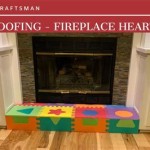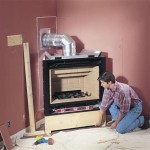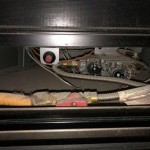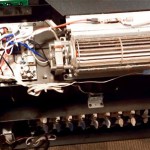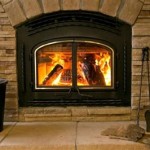Installing A Wood Burning Fireplace In An Existing Home
Adding a wood-burning fireplace to an existing home can enhance its aesthetic appeal, provide a cozy ambiance, and offer a supplementary heating source. However, installing a fireplace in a pre-existing structure can be a multifaceted endeavor, involving structural considerations, safety protocols, and compliance with local building codes. This article will provide a comprehensive overview of the key aspects of installing a wood-burning fireplace in an existing home.
Structural Considerations
The first step in installing a fireplace is to assess the structural integrity of the existing home. This involves determining if the floor, walls, and roof can support the weight of the fireplace and its chimney. A structural engineer can conduct a professional assessment to ensure that the existing structure is adequate. If reinforcement is necessary, steel beams, support columns, or other structural modifications may be required.
The construction of the fireplace itself requires careful planning and execution. The hearth will be constructed from non-combustible materials like concrete or stone and must be able to withstand the heat generated by the fireplace. The firebox, the enclosed area where the fire is contained, will also be made from non-combustible materials and needs to be properly sealed to prevent the escape of smoke and gases. A chimney, which serves as the conduit for smoke and gases, needs to be installed in a way that allows for safe and efficient venting. The chimney must be constructed from fire-resistant materials and be properly insulated to prevent heat loss and drafts.
Safety Protocols
Safety is paramount when installing and operating a wood-burning fireplace. The fireplace and chimney should be inspected regularly by a certified inspector to ensure that they are in good working condition. The fireplace should be properly vented to the exterior of the home, and the chimney should be inspected for obstructions such as creosote buildup, which can lead to a chimney fire. A spark arrestor should be installed on the top of the chimney to prevent embers from escaping and igniting nearby materials. The fireplace should be used with caution and never left unattended. The area surrounding the fireplace should be kept clear of flammable materials, and a fire extinguisher should be readily available.
The installation of a wood-burning fireplace requires a permit from the local building department. The permit process will involve submitting plans for the fireplace and chimney, demonstrating that the installation meets local building codes and fire safety regulations. The inspector will review the plans and inspect the installation during and after construction to ensure compliance. It is essential to obtain all necessary permits before beginning any construction work.
Choosing the Right Fireplace
The type of fireplace that is most suitable for an existing home will depend on a variety of factors, including the size and layout of the room, the size and configuration of the house, and the homeowner's personal preferences. There are many different styles of wood-burning fireplaces available, each with its own unique characteristics and advantages. Some common types of fireplaces include masonry fireplaces, zero-clearance fireplaces, and freestanding stoves. Each type of fireplace has its own pros and cons, and it is important to choose a fireplace that is appropriate for the specific needs of the home.
Masonry fireplaces are traditional fireplaces that are built from brick or stone. They are generally large and heavy, and they require a significant amount of space. They are also relatively expensive to install, but they can last for many years with proper maintenance. Zero-clearance fireplaces are pre-fabricated fireplaces that are designed to be installed in close proximity to combustible materials. They are generally smaller and lighter than masonry fireplaces, and they are less expensive to install. Freestanding stoves are portable fireplaces that can be placed in any room of the house. They are generally small and compact, and they are relatively inexpensive. They are also very efficient, as they can be used to heat multiple rooms.
Installing a wood-burning fireplace in an existing home is a complex project that requires careful planning and execution. By following these steps, homeowners can ensure that their fireplace is installed safely and efficiently, and that it provides years of enjoyment.

Adding A Fireplace To Existing Home Where For Fireplaces

How To Install A Wood Burning Fireplace Insert Fireplaces Direct Learning Center

Fireplace Insert Installation Wood Burning Inserts

Do You Need A Wood Fireplace Insert

Your Guide To Wood Stove Installation Full Service Chimney

How To Install A Fireplace Homeserve Usa

Your Home Doesn T Have A Fireplace And You Want To Add One

Mobile Home Fireplaces Clayton Studio

4 Things Every Homeowner Should Know Before Installing A Fireplace

Your Guide To Wood Stove Installation Full Service Chimney
Related Posts

